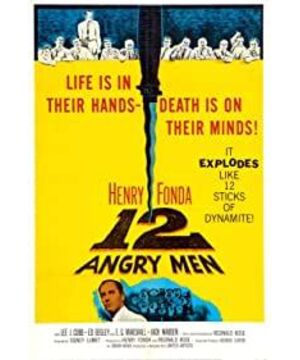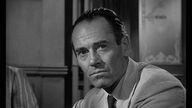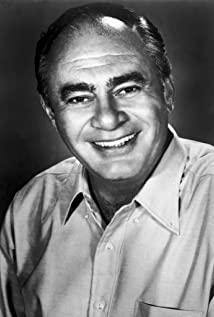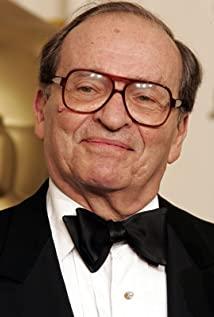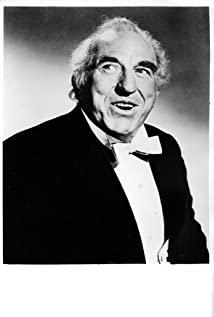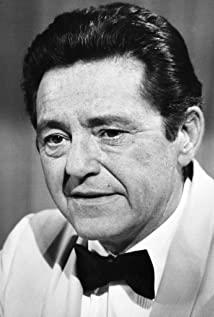"Twelve Angry Men" Fifty Years: Black and White Pictures in the courtroom □ text / Vulcan discipline
After such a long period of silence, it is hard for me to imagine that I would be able to calm down and watch the rough movies in these black and white movies. Time is like a machine that can be automatically filtered. After 50 years have passed, there will always be something that will be remembered by people. All the glitz will fade away; and all the compassionate sentiments will be left behind. I was thinking, 50 years from now. Would anyone still remember that on a certain day 50 years ago, in the early morning before dawn, I sat in front of my computer that had become an antique and wrote a film 100 years ago; just because of a misunderstanding, Then write. ——Vulcan Ji. Inscription.
To calm down and watch a movie that is too old to be moldy requires chance and a lot of time; and I am fortunate that I have it all. In fact, what I wanted to watch was the "Twelve Angry Men" recently exhibited at the 64th Venice International Film Festival, also called "Russian Federation" or "12 razgnevannyh muzhchin"; it was just because the translation was the same or similar, so I Just got this movie. From the poster, it seems that "Russian Federation" is not much different from this movie. It is all a table with twelve angry men discussing something. I'm wondering whether that movie is a tribute to this movie 50 years ago. Black and white, mono, maybe because of the old radio equipment, there are even some noise and violent noise; but after 50 years of time, this movie is still alive and fresh in my opinion. I watched the revised version of the DVD, which at least satisfied me in terms of clarity. And if you survive the first ten minutes of color cravings, it seems difficult not to finish watching this movie. Perhaps, there will really be some movies that can be called immortal classics, at least those time passing can not see any traces in this movie, through the changes of time, space and world events, it still preserves this movie intact All that the movie wanted to express at the beginning came before our eyes.
Without the big-name celebrities we are familiar with, without the director style we are familiar with, everything is in the unknown. All I know may only have been awarded the Lifetime Achievement Award from the American Academy of Motion Picture Arts, the Special Honor Award awarded by the American Academy of Motion Picture Arts and Sciences, and won the Oscar winner in 1981 for his deceased work "Golden Pond" and refused to receive it in the same year. Henry Fonda at the Oscar Lifetime Honor Award. However, to me, what I know seems to be only the legendary life of a great actor and drama master and the data of chatting with others. I am still in an extreme ignorance of everything about this movie. But perhaps it is precisely because of this complete unknown that this movie brought me a complete shock. After watching this film, I suddenly sighed that so many films have been doing some futile work for so many years. The development of film art was very mature 50 years ago. Repeating all the work that the predecessors have done is actually a kind of futile waste.
The filming technique of this movie still looks unconventional and even makes me feel very fresh. The film tells the story of a jury of twelve men who was almost convicted of a father-killing teenager who discussed the case after the trial. The film began at the door of a New York court, and after a brief court debate, it entered the jury discussion stage. He came from a slum and lost his mother when he was young. His father was sentenced to prison so he stayed in an orphanage for more than two years. After he was released from prison, his father took him home. Life is poor, his father is alcoholic, he fists up when he feels a little unpleasant, and he can't even master the English sentence patterns and simple conversations. For the judge or jury, this is a first-degree murder without any suspense. No one cares whether this young man has actually killed his father, and no one expects whether this young man can make any contribution to this society if he lives. Even his defense lawyer didn’t bother to defend him, and the judge was lazy. Everyone believed that this child had killed his father and had to pay for it and was sent to the electric chair to end it had not yet begun. Life. Ninety-five percent of the film is concentrated in the jury discussion room that is less than 40 square meters. There are no other scenes except this scene. All the plots are conducted through jury discussions, and the step-by-step dissection method shows us all the details of the murder case that has occurred, after serious logical reasoning and hypothetical inferences. After the argumentation, all the plots of the entire movie are completed. This kind of narrative seems to make me feel novel now. At least, all the plot development of a movie can be completed in such a small space with the expressions, actions and language of the characters; it can be said that the movie is rigorous and successful in terms of script and line design.
What can we see in this movie. The unification of responsibilities, powers and obligations, the American judicial system, the judicial policy of “I would rather let go of 10,000 and don’t make mistakes”, dig deep into human nature, infer and analyze the psychology of characters, cherish life’s kindness of humanity, right The due respect of life, actual combat techniques to find breakthroughs in adversity, and logical reasoning methods, etc. What we want to look for in the movie, we will see what, so we take what we need, this is perhaps the most fascinating part of a great movie. The movie talks about power. The juror played by Henry Fonda accused another juror and said: What power do we have to end another person's life so lightly and without discussion? Ending the lives of others is not something that can be so rash. A vote that should have been without any doubt becomes a bit confusing because of the respect for life. With a lot of long shots and extremely fast-talking discussions, peaceful rebuttals and reasonable inferences, this ninety-minute debate seemed exciting, with a neat rhythm, a compact structure, and a serious theme. It was not at all due to the limitations of the story scene. It looks dull. The one-sided situation, one's persistence and finally persuaded everyone to reach a consensus, this kind of plot setting looks very attractive. All persuasion is based on a rigorous reasoning logic, which makes the movie's rationality beyond doubt. Someone once said that the plot of this movie seems a bit far-fetched; in fact, no, if you can really understand the jury system, although there is no way to prove that the suspect is not guilty, there are doubts that can prove that the evidence in the case is not sufficient to be convicted; Coupled with layers of analysis and argumentation, the plot of the movie can actually stand scrutiny.
Of course, children who can't stand the long dialogue should not go to this movie. Because all the plots of this movie are developed and developed with dialogue. But the dialogue of this movie is not boring and if it can keep up with its ideas, this will be a movie that people talk about. Another outstanding aspect of this movie is the use of dialogue, character behavior and language to shape the character's image. In this long debate, the characters of each character are extremely full and have their own personalities. A small scene is used to show the story and successfully portrayed the image of twelve jurors, young suspects, murdered victims, and old people. The images of the neighbors and the woman across the street are full of personality; this movie does a great job.
For now; the movie two months ago is no longer a new one. And this movie, which has traveled through 50 years of time, still seems to be very touching, which makes me believe in the classics. As time goes by, some things will always be forgotten; and some things will always be mentioned, remembered and finally remembered. This is a movie that should be remembered and should not be forgotten. The trial never stops. The crime case has been repeated countless times in the movie, but this movie, about the trial in the black and white film 50 years ago, maybe, I will always remember.
2007-09-01; Wushen month of Dinghai year.
Note: The movie data extension link. ■Title: "12 Angry Men" ■Translation: "Twelve Angry Men" ■Director: Sidney Lumet ■Screenplay: Reginald Rose ■Starring: Lee J. Cobb, Henry Fonda (Henry Fonda), Martin Balsam ■Genre: plot, crime ■Length: 96 min ■Country: United States ■Language: English ■Color: Black and White ■Mixed: Mono ■Cost: $340,000 (estimated) ■Distribution: MGM United Home Entertainment ■ Premiere: April 13, 1957 (New York) ■Introduction: This Berlin Golden Bear Award-winning film is the first film of Sidney Lumet, It brings the unique realistic and intellectual style of New York-based directors from the television industry into American movies with outstanding results. Hunter Fonda plays a juror who insists on his conscience. A New York youth accused of killing his father will be sentenced to death for first-degree murder. Eleven jurors have already found the suspect guilty. Only he felt that the situation was suspicious and insisted on raising objections. With patience and perseverance, he persuaded the other jurors to overturn the original intentions, and finally vindicated this almost unjust case. related pictures.
Movie poster
DVD cover
The first shot at the beginning of the movie; looking up at the camera, slowly raising it from bottom to top.
The first collective appearance of the entire jury; and the judge is stating the basic principles of "reasonable doubt".
This kind of stupid young man, innocence or guilty arguing will determine his fate; and he will never know the content of those fierce debates and quarrels.
The first full jury vote, an overwhelming result of 11:1.
This is the best hypothesis and basis for argumentation. "People will inevitably make mistakes" gives the suspect the most humane judicial basis for the advantage of doubt.
The hardest and most angry guilty critic; also one of the fullest characters in the film.
Human attention and respect for life are vividly expressed in this short monologue.
"Reasonable doubt" convinced most people.
When all the seemingly natural evidence has been overturned, a person is convicted based on such a conjecture; perhaps, this is the most rogue struggle of the guilty argument.
The most rational person among the guilty critics, after the evidence he believed most was overturned, he insisted on his conscience and integrity.
When the last guilty argument was also persuaded, he burst into tears; perhaps it was just his disappointment with his son that made him so determined to convict the young suspect.
This is the last shot of the movie; looking down at the shot, looking at the first shot end to end.
TOM exclusive manuscript; may not be reprinted without permission.
View more about 12 Angry Men reviews


